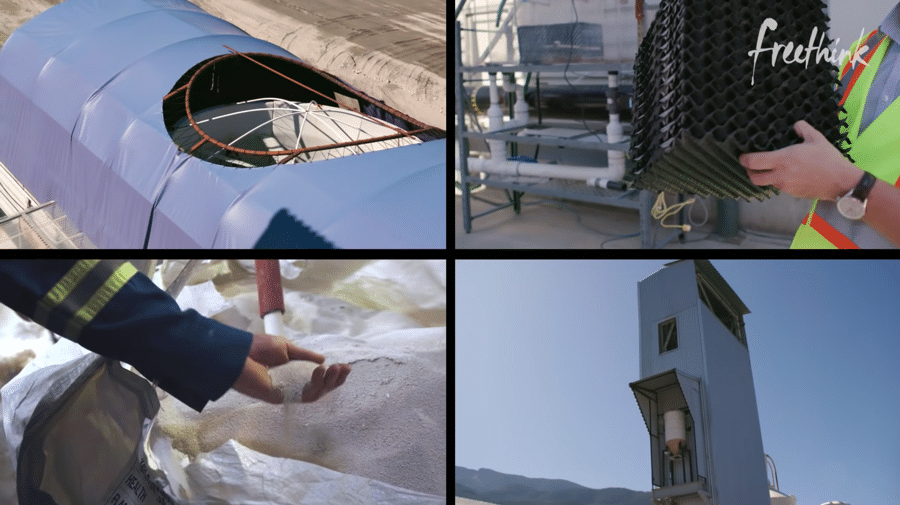In our quest for a sustainable future, the urgent need to tackle carbon dioxide emissions has become undeniable. With a staggering 50 billion tons released annually, this greenhouse gas is trapping heat and reshaping our planet.
Now, companies like Canada-based Carbon Engineering are building direct air capture (DAC) carbon removal facilities at a large scale, “which would have been off the table a few decades ago, as kind of a wacky scheme by mad scientists, now needs real consideration.”
This Freethink video, via TED-Ed, shares how carbon removal and storage—a carbon negative option—or carbon capture and utilization—a carbon neutral or positive option, depending on how it’s deployed—are “ready for us to use now.”
But it’s not a get-out-of-jail-free card; Direct Air Capture is just one in an arsenal of essential steps to significantly decarbonize countries around the planet. From Simon Nicholson, American University’s co-Director of the Institute for Carbon Removal Law and Policy, a first point:
“It’s much easier to keep a unit of carbon dioxide out of the atmosphere than it is to try and retrieve it once it’s already there. So, when it comes to climate change, the best way to respond is to stop putting greenhouse gases into the atmosphere.”

There are also biological actions needed to help remove the estimated 10 billion tons per year requirement for sustainability: protecting old growth trees, planting new ones, changing farm practices, incorporating the use of biochar, protecting peatlands, restoring coastal wetlands, reestablishing keystone species, and other natural climate solutions.
And then there’s direct air capture. From Steve Oldham, CEO at Captura direct ocean capture, speaking for Carbon Engineering in 2019:
“We just announced our first large-scale plant in Texas. We’re actually expecting that would be a one megaton atmospheric CO2 plant. That’s the equivalent of 14 million trees in one plant…”
“…if carbon dioxide can be captured for $150 or less per ton, then it becomes almost a commercially viable enterprise because that carbon dioxide could be put to a use that would enable the facility to pay for itself.
“But to scale it up would mean building lots and lots of these facilities and spreading them around the world. You could eliminate the world’s emissions with 40 thousand of our plants. Sounds like a big number, but it’s actually less than there are power plants, for example, in the world.”
Watch these related videos next:
• How to Save Our Planet
• How do bison help fight against climate change?
• The power of seaweed: How can kelp help capture carbon?
• What if there were 1 trillion more trees?
• What do kids want us to know about climate change?
Curated, kid-friendly, independently-published. Support this mission by becoming a sustaining member today.




